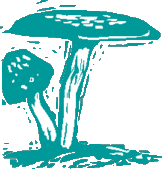

Hallucinogens are a large and diverse class of psychoactive drugs that can produce altered states of consciousness characterized by major alterations in thought, mood, and perception as well as other changes. Most hallucinogens can be categorized as either being psychedelics, dissociatives, or deliriants. However, others such as Fly agaric as well as other GABAergic hallucinogenics are more often considered to technically be hypnotics, therefore indicating another separate subcategory of drugs which can substantially alter visual perception. Continue reading
Hallucinogenic Drugs Detected In 3,000-Year-Old Bronze Age Shamanic Hair Samples IFL Science - April 6, 2023
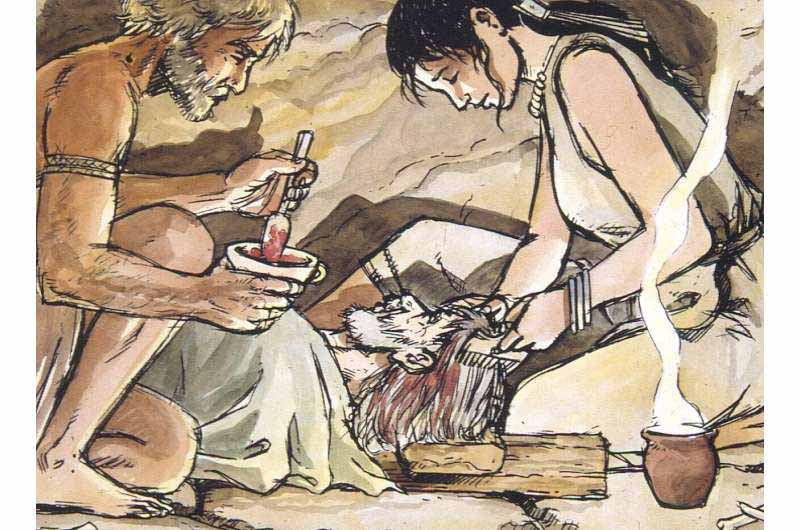
An analysis of strands of human hair from a burial site in Menorca, Spain, indicates that ancient human civilizations used hallucinogenic drugs derived from plants. Previous evidence of prehistoric drug use in Europe has been based on indirect evidence such as the detection of opium alkaloids in Bronze Age containers, the finding of remains of drug plants in ritualistic contexts, and the appearance of drug plants in artistic depictions.
Ayahuasca therapy boom: Risky or life-changing? CNN - April 12, 2016
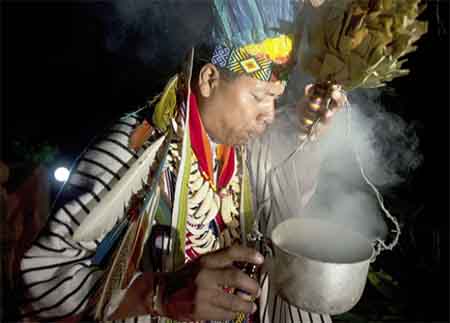
Ayahuasca, also known as "yage," is a mind-altering concoction made from two Amazonian plants: the Banisteriopsis caapi vine and the leaves of the chacruna plant. It's generally taken in the Amazon jungle as part of a ritualistic ceremony, guided by a shaman singing traditional songs called icaros. In the past many Westerners have flocked to ayahuasca centers in the jungle as it's reported to have beneficial effects on conditions such as depression and anxiety, as well as aiding people to quit serious addictions.
Video: What happens in your brain when you take LSD? BBC - April 12, 2016
Researchers from Imperial College London have run scans on the human brain in order to look at the effects of lysergic acid diethylamide, or LSD. Researchers hope that the findings of the study might pave the way to develop therapeutic applications to treat patients.
1 in 20 People Have Hallucinated Live Science - May 28, 2015
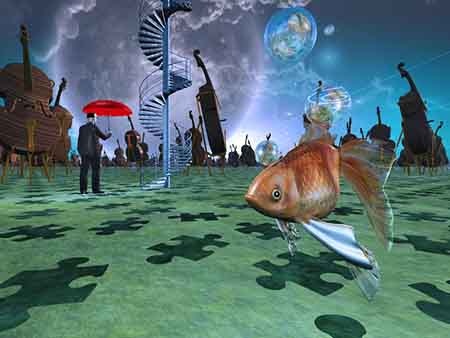
About 1 in 20 people in the general population have experienced at least one hallucination in their lifetime that wasn't connected to drugs, alcohol or dreaming, according to a new study. Researchers analyzed information from more than 31,000 people in 18 countries who were interviewed as part of a mental health survey from the World Health Organization. Participants were asked whether they had ever heard voices or seen things that didn't exist, or if they had experienced a delusion (a false belief), such as the thought that their mind was being controlled or that they were being followed. The study excluded people who possibly had a psychotic disorder, such as schizophrenia or manic depression, which can cause hallucinations and delusions. Therefore, the findings show that hallucinations and delusions are not always connected to serious mental illness, the researchers.
11 Odd Facts About 'Magic' Mushrooms Live Science - November 11, 2014
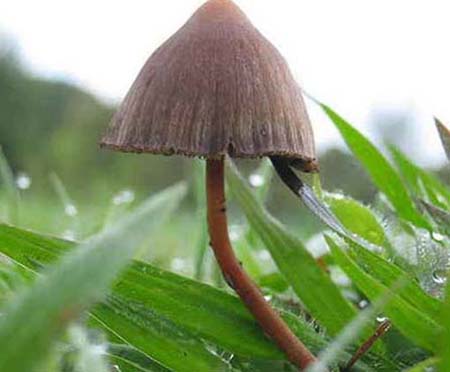
1. Mushrooms hyperconnect the brain
2. Slow the brain down
3. Magic mushrooms go way back
4. Magic mushrooms explain Santa ... maybe
5. 'Shrooms may change people for good
6. Mushrooms kill fear
7. They make their own wind ...
8. At least 144 species of mushroom contain the psychoactive ingredient psilocybin
9. Experimenting with 'shrooms
10. The counterculture cultivator
11. Animals feel the effects
Magic Mushrooms Create a Hyperconnected Brain Live Science - October 29, 2014
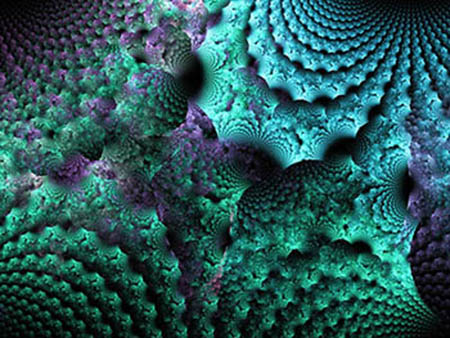
Magic mushrooms may give users trippy experiences by creating a hyperconnected brain. The active ingredient in the psychedelic drug, psilocybin, seems to completely disrupt the normal communication networks in the brain, by connecting brain regions that don't normally talk together. The research is part of a larger effort to understand how psychedelic drugs work, in the hopes that they could one day be used by psychiatrists - in carefully controlled settings - to treat conditions such as depression.
Humans, on some level, intuitively sense a loss of "powers" they once possessed but were taken away when they entered physical reality, to play within its boundaries - one day to return to consciousness and light. And yet the quest for many as been to go beyond and find their way back to that which they know is their inherent gifts. This goes to studies in alchemy and the quest for eternal life.
People are drawn to white powdered gold to move beyond physical consciousness. Gold takes us to alchemy - or consciousness beyond linear time. Ancient alchemists called white powdered gold the Elixir of Life - a substance that would facilitate extraordinary life-spans and cure many diseases by allowing the body to operate as close to perfection as possible. It is likewise, the Philosopher's Stone in alchemy.
Hebrews called white powdered gold Manna - an edible substance that, according to Abrahamic doctrine, God provided for the Israelites during their travels in the desert according to the Bible and the Qur'an. Some called it the Food of the Gods. One myth states that white powder gold, had been around since the destruction of the Temple of Solomon. When the high priests left as the temple was being destroyed, they took the secret out into the desert and organized a commune called Qumrun where they became the Essenes. Eventually, the white powder was used to nourish a woman named Mary, mother of Jesus. Some claim that it was the white powder of gold which allowed Jesus his many gifts, including his ascension into heaven.
In ancient Egypt, white powder gold was associated with Thoth and alluded to in the Book of the Dead
Thoth was also Hermes in Greek mythology and Merlin featured in Arthurian legend.
Ancient Mesopotamians called the powder 'shem-an-na' (highward fire-stone).
Derived from gold, platinum, and other transition elements, these impalpable white powder substances have been referred to as 'monatomic' (a single atomic state). As such, they were classified by their research pioneer, David Hudson, in the 1980s as ORMEs (Orbitally Rearranged Monatomic Elements).
New understandings in physics suggest, however, that the powders might actually be 'diatomic' or small atomic cluster 'condensates'. It is now generally accepted, therefore, that the materials might be more universally referred to by the generic terms ORMUS or 'M-state' elements. Ormus was also a 10th - 17th century kingdom located within the Persian Gulf - which takes us to ancient Persia and Zoroaster, who was also Thoth.
Thermo-gravimetric analysis has revealed that, at certain high temperatures, the material weight of M-state elements will reduce substantially, even to the degree that they will levitate. In specific circumstances they also have the ability to become superconductive and to resonate in parallel dimensions.
Today, there are a number of companies manufacturing products containing M-state substances. Some are working from a pure gold base, while others are using platinum group trace elements from sea sediments and volcanic or meteoric Earth sources. The extent to which these products might individually approach the fully charged superconductive state, however, is unknown to us at this time since the enigmatic powders do not react to conventional analysis as do the metallic elements from which they derived.
In conclusion - white powder gold is simply another mind-altering drug or hallucinogen.
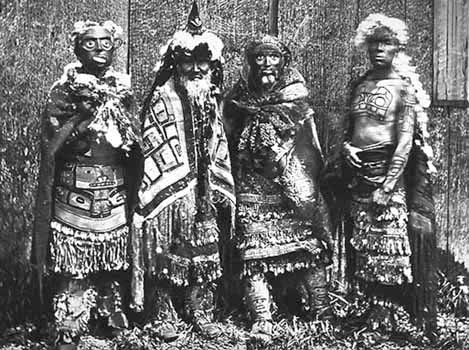
Shaman traverses the axis mundi - the world center or the connection between Heaven and Earth - and enter the spirit world by altering consciousness. This is generally done with the use of mind-altering drugs found in nature, but in truth they are just getting "high".
Throughout the ancient Americas, rulers and shamans used hallucinogens to connect with the spirits of the other world. They believed that only those in touch with the supernatural realm could heal the sick, predict the future, ensure the fertility of the world, and resolve the larger problems of existence.
Natural hallucinogens were regarded by pre-Columbian cultures as sacred and endowed with inherent force. Their preparation and ingestion were associated with elaborate rituals, and they were consumed only by people considered to have sufficient power to communicate with the spirits and ancestors who dwelled in the other world.
Psychedelic Mushrooms are also known as magic mushrooms, sacred mushrooms, and, more generally, hallucinogenic mushrooms. They are fungi which have psychedelic, i.e. "mind manifesting", properties when ingested. In modern Western society, they are used recreationally for their psychedelic effects.
Mescaline is a naturally occurring psychedelic alkaloid of the phenethylamine class, known for its mind-altering effects similar to those of LSD and psilocybin. It occurs naturally in the peyote cactus (Lophophora williamsii), the San Pedro cactus and in the Peruvian torch, and as well in a number of other members of the Cactaceae plant family. It is also found in small amounts in certain members of the Fabaceae family including Acacia berlandieri.
Peyote - means "glisten" or "glistening". Other English names include cactus pudding, dumpling cactus, turnip cactus, whiskey cactus, white mule, devil's root, diabolic root, Indian dope and mescal button. Native North Americans are likely to have used peyote for at least 5,500 years. It is native to southwestern Texas and Mexico. It is found primarily in the Chihuahuan desert and in the states of Coahuila, Nuevo León, Tamaulipas and San Luis Potosi among scrub, especially where there is limestone. Known for its psychoactive properties when ingested, peyote is used worldwide as an entheogen and supplement to various transcendence practices, including meditation, psychonautics, and psychedelic psychotherapy. Peyote has a long history of ritualistic and medicinal use by indigenous Americans. It flowers from March through May, and sometimes as late as September. The flowers are pink, with thigmotactic anthers (like Opuntia).
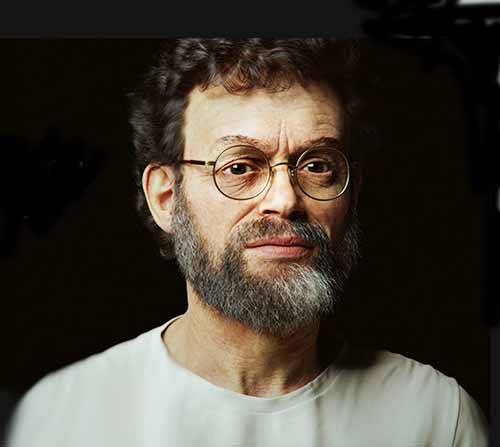
Terence McKenna (November 16, 1946 - April 3, 2000) was an American ethnobotanist and mystic who advocated the responsible use of naturally occurring psychedelic plants. He spoke and wrote about a variety of subjects, including psychedelic drugs, plant-based entheogens, shamanism, metaphysics, alchemy, language, philosophy, culture, technology, environmentalism, and the theoretical origins of human consciousness. He was called the "Timothy Leary of the '90s", one of the leading authorities on the ontological foundations of shamanism, and the intellectual voice of rave culture.
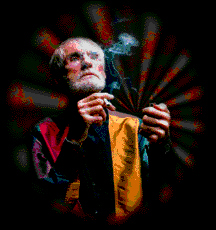
Dr. Timothy Leary was a guest on my television talk show, "The Metaphysical Experience" in 1990. Leary believed that these drugs can help lift you into a higher reality space to have better understanding of other realities. When I looked in his eyes, one could see that "vacant look" of a soul lost in this reality and soon to cross over. Shortly after our interview, Leary died.
Timothy Francis Leary (October 22, 1920 - May 31, 1996) was an American writer, psychologist, campaigner for psychedelic drug research and use, 60s counterculture icon and computer software designer. He is most famous as a proponent of the therapeutic and spiritual benefits of LSD. During the 1960s, he coined and popularized the catch phrase "Turn on, tune in, drop out."
Along with Dr. Leary, Dr. Ralph Minzer, and Dr. Richard Alpert explored these domains from a scientific perspective linking them with books like the Tibetan Book of the Dead.
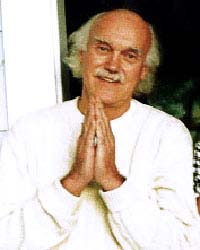
Dr. Richard Alpert - April 6, 1931 - December 22, 2019 - later known as Baba Ram Dass. Alpert was a professor of psychology at Harvard University who became well known for his controversial research program which studied the effects of LSD.
He later converted to Hinduism and is currently one of the most prominent American Hindus. He was born to a prominent Jewish family in Boston, Massachusetts.
Alpert worked closely with Dr. Timothy Leary at Harvard, where the two conducted many experiments on the effects of LSD. The pair were dismissed from the university in 1963 due to their controversial research on the Harvard Psilocybin Project. They relocated, and continued their experiments at a private mansion in New York.
In 1967, Alpert traveled to India, where he became heavily involved in meditative practice and yoga. After meeting and becoming a devotee of Neem Karoli Baba, a Hindu guru in Uttar Pradesh, he changed his name to Ram Dass, meaning servant of God.
Upon his return to the United States, Alpert founded several organizations dedicated to expanding spiritual awareness and promoting spiritual growth. In February 1997, he suffered a stroke which left him with expressive aphasia, but he continues to give lectures at a variety of places.